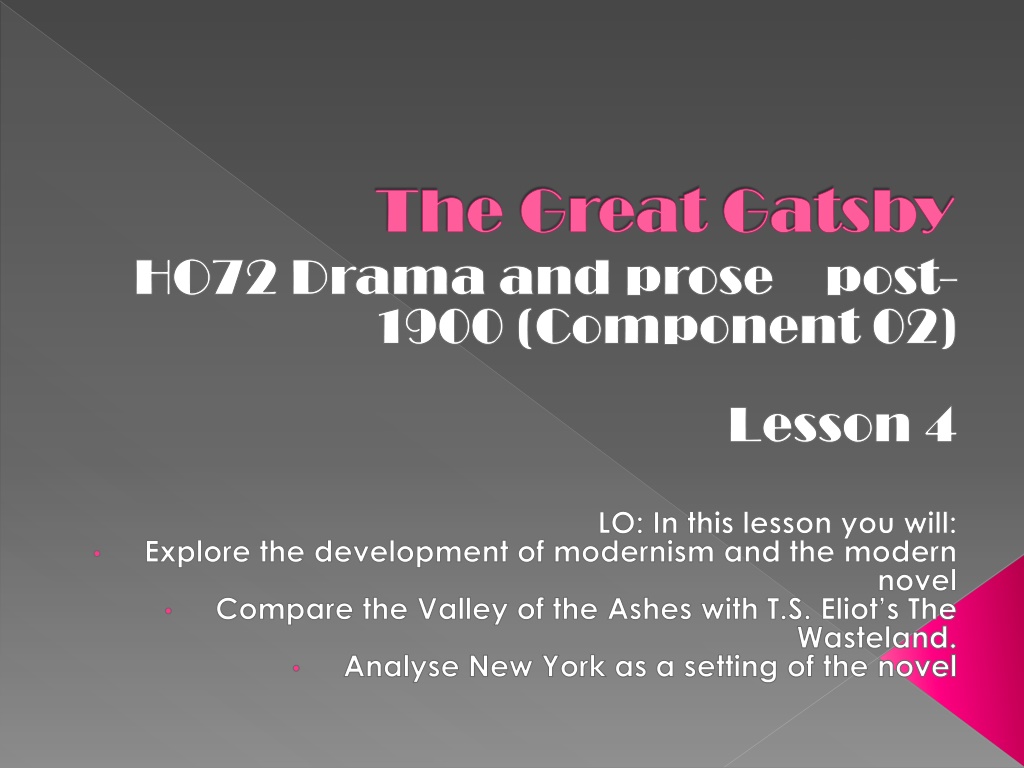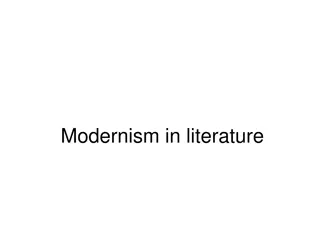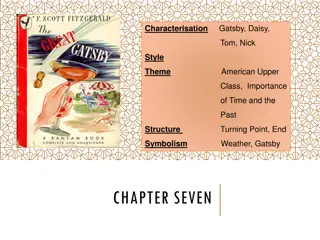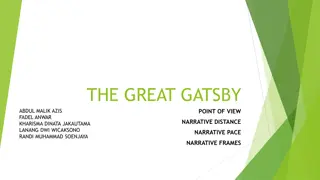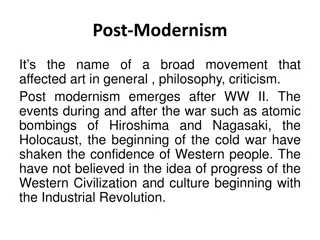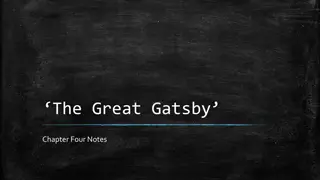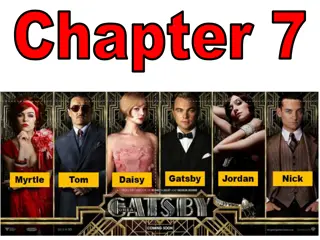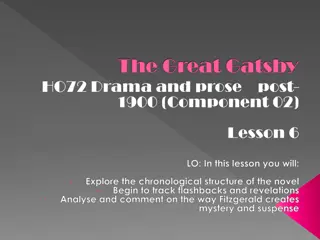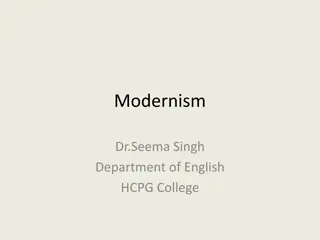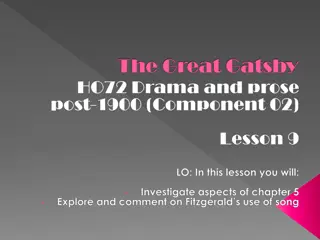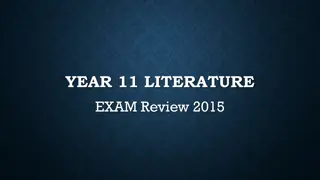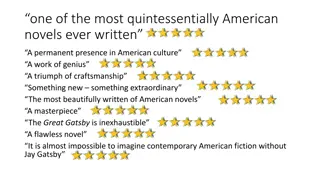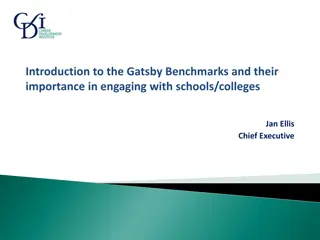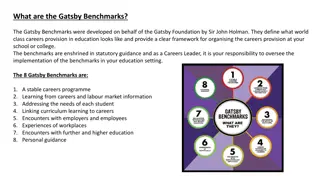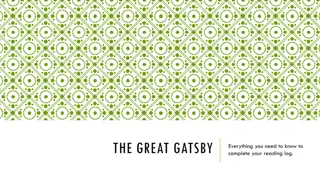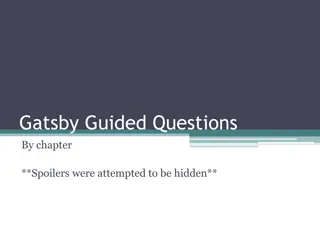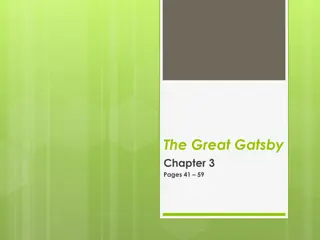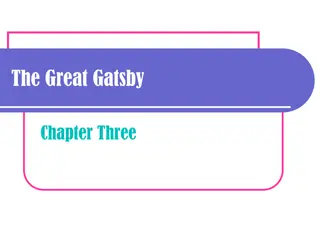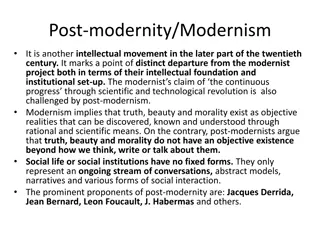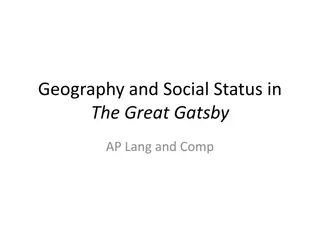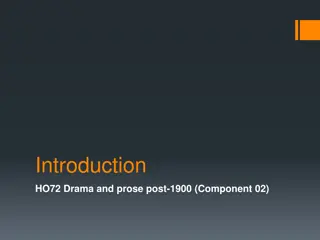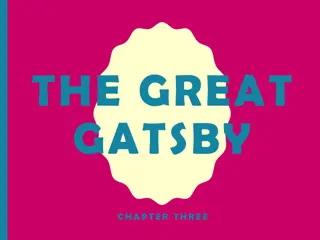Exploring Modernism and the Modern Novel in The Great Gatsby
This lesson delves into the development of modernism and the modern novel through a comparison of The Great Gatsby's Valley of the Ashes with T.S. Eliot's The Wasteland. It discusses the transition from Romanticism to Realism to Modernism in literature, highlighting how Fitzgerald merged poetic Romanticism with Modernist elements. Students will analyze the desolate worlds depicted in the texts, reflecting the authors' commentary on the societal landscapes they lived in. The homework tasks involve wider reading from Romantic, Realist, and Modernist literary movements.
Download Presentation

Please find below an Image/Link to download the presentation.
The content on the website is provided AS IS for your information and personal use only. It may not be sold, licensed, or shared on other websites without obtaining consent from the author. Download presentation by click this link. If you encounter any issues during the download, it is possible that the publisher has removed the file from their server.
E N D
Presentation Transcript
The Great Gatsby HO72 Drama and prose HO72 Drama and prose post 1900 1900 (Component 02 (Component 02) ) post- - Lesson 4 Lesson 4 LO: In this lesson you will: Explore the development of modernism and the modern novel Compare the Valley of the Ashes with T.S. Eliot s The Wasteland. Analyse New York as a setting of the novel
Modern Modern vs vs realist realist AO3/4 The Romantic Era was a late 18th- early 19thcentury artistic movement which focused on the celebration of the beauty of nature and favoured emotion over reason. Authors include poets such as Wordsworth, Blake and Edgar Alan Poe. Realism became popular from the mid 19thcentury and was all about the historical time frame and reference, and writing about events and situations that actually happened in real life. The best know authors at this time were Mark Twain and Emily Dickenson. Modernism coincides with the rapid technological change of the early 20thcentury, driven by demands of the war. Writers began to experiment with unconventional language and structures. Fitzgerald greatly admired modernist poet T.S Eliot. Fitzgerald took things further by merging poetic Romanticism with the spare style of the Modernist, incorporating advertising slogans and slang into his work.
Independent Task Independent Task AO3/4 Read the handout you have been given. Watch and make notes on the short lecture on Modernism. Link on Blog.
The Wasteland and The The Wasteland and The Valley of Ashes Valley of Ashes AO4 Fitzgerald admired the modernist poet T.S. Eliot. Eliot s long poem The Wasteland was published in 1922. It represents a sterile landscape, where everyone is isolated and unable to love, it voiced a common concern of the 1920s. Eliot s idea may have inspired Fitzgerald s idea of the desolate valley of the ashes. What shall we do to-morrow? What shall we ever do? T.S Eliot, The Wasteland What ll we do with ourselves this afternoon? cried Daisy, and the day after that, and for the next thirty years? F. Scott Fitzgerald, The Great Gatsby
Two Desolate Two Desolate W Worlds orlds AO3/4 Compare the description of The Valley of the Ashes with the extract from Eliot s The Wasteland. What similarities are there? What comment is each writer making about the world in which they live? Annotate each of the texts.
Homework Homework wider reading wider reading AO3/4 Over the next week, you will carry out wider reading from the three literary movements and compare their styles. Romantics: William Blake, selected poems; Edgar Allan Poe, The Raven Realist:Mark Twain, The Adventures of Huckleberry Finn , Emily Dickenson Also: Read chapter 3 Modernist:T.S Eliot, The Wasteland Late Modernist: William Faulkner, Lord of The Flies All the texts are available on my Blog. In your reading journal, write a summary of the differences you notice between the texts. Don t forget to add notes to the setting padlet! Essay coming up!
New York, New York New York, New York AO2/3 As we read chapter 2, each group will focus on a particular theme of the chapter: Appearance and material possessions Unhappy marriage Buchanans, Wilsons, McKees The poor treatment of the working classes- Wilson, Myrtle Alcohol as a negative influence Collect key quotations which illustrate the themes. Discuss what Fitzgerald is saying about each. Make a link to context.
